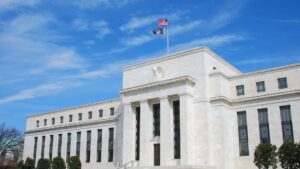Economic Insights: Navigating the Current Landscape of Interest Rates and Consumer Debt
Welcome to the Extreme Investor Network, where we equip you with the essential financial knowledge to navigate today’s complex economic conditions. Understanding the intricacies of interest rates and how they affect your financial decisions is more critical than ever. In this blog, we will dissect the latest insights on interest rates, consumer borrowing costs, and provide unique strategies to enhance your financial well-being.
The Federal Reserve’s Current Stance on Rates
The Federal Reserve is currently expected to maintain interest rates during their upcoming two-day meeting. While recent inflation reports have shown signs of improvement, the ever-escalating trade tensions are likely to influence consumer goods prices negatively. As Andrzej Skiba from RBC Global Asset Management highlights, new tariffs could potentially place upward pressure on inflation, complicating the Fed’s ability to cut rates.
For everyday consumers, this means that maintaining a watchful eye on the Fed’s decisions is crucial as these rates influence various loans, savings, and credit facilities.
Consumer Debt: An Overview
As Greg McBride, chief financial analyst at Bankrate.com, notes, “Consumers are stretched and stressed.” This statement rings true as households face rising costs across all areas of life. While the Fed has refrained from cutting rates recently, some relief might be on the horizon. Borrowing costs for mortgages, auto loans, and credit cards have begun to ease slightly, but they remain higher than historical averages.
Here’s a closer look at how different types of loans and savings accounts are faring.
Mortgage Rates: A Silver Lining
Mortgage rates, closely tied to Treasury yields and overall economic performance, have been experiencing a downward trend. The average rate for a 30-year fixed mortgage has moved from 7.04% at the beginning of the year to around 6.77% currently. While this drop is promising, consumers should remain vigilant due to ongoing uncertainties surrounding tariffs and economic stability.
As part of your financial strategy, now could be an opportune time to consider refinancing your mortgage or exploring new home purchases while rates are comparatively lower.
Credit Card Rates: An Ongoing Challenge
Most credit cards feature variable rates directly linked to the Fed’s benchmark interest. Fortunately, the average annual percentage rate (APR) has decreased slightly from 20.27% to 20.09% this year. Although this marks a change, it’s important to remember that credit card debt continues to be a heavy burden, with revolving debt up by 8.2% year-over-year.
To combat high credit card interest, consider improving your credit score, which can qualify you for more favorable rates, and paying down existing balances aggressively.
Auto Loans: The Growing Burden
Car buyers face dual challenges of rising car prices and elevated interest rates. The average rate on a five-year new car loan is down to 7.42% from 7.53% earlier this year, but many potential buyers still encounter increasing monthly payments due to escalating vehicle prices. For those considering a car purchase, thorough budgeting is paramount in order to manage both the loan and the vehicle’s overall cost.
Student Loans: Fixed Yet Fluctuating
Federal student loan rates remain fixed, providing some level of insulation from fluctuating interest rates. However, incoming undergraduate borrowers for the 2024-25 academic year should prepare for increased rates of 6.53%, up from 5.50% in the previous cycle. For private loans, keep an eye on variable rates tied to indexes, as they can change unexpectedly based on market fluctuations.
Savings Accounts: The Bright Side
Despite the challenges presented by borrowing, there is light for savers. High-yield online savings accounts currently provide average returns of about 4.4%, the best figures seen in over a decade. This attractive return is an excellent opportunity for savers to create a cushion against inflation and prepare for unexpected expenses.
Final Thoughts
In summary, while the current economic landscape presents its challenges, understanding interest rates and their implications can empower you to make informed decisions about your finances. The trends in mortgages, credit cards, auto loans, and savings present both hurdles and opportunities for consumers.
At the Extreme Investor Network, we believe that knowledge is power. By staying informed about these financial dynamics, you can strategically navigate your personal finances and work towards your financial goals for a brighter future. Join us for more insights and tools that will help you achieve financial freedom.
Stay savvy and invested!
Feel free to customize this content to fit your voice and additional offerings at the Extreme Investor Network!

